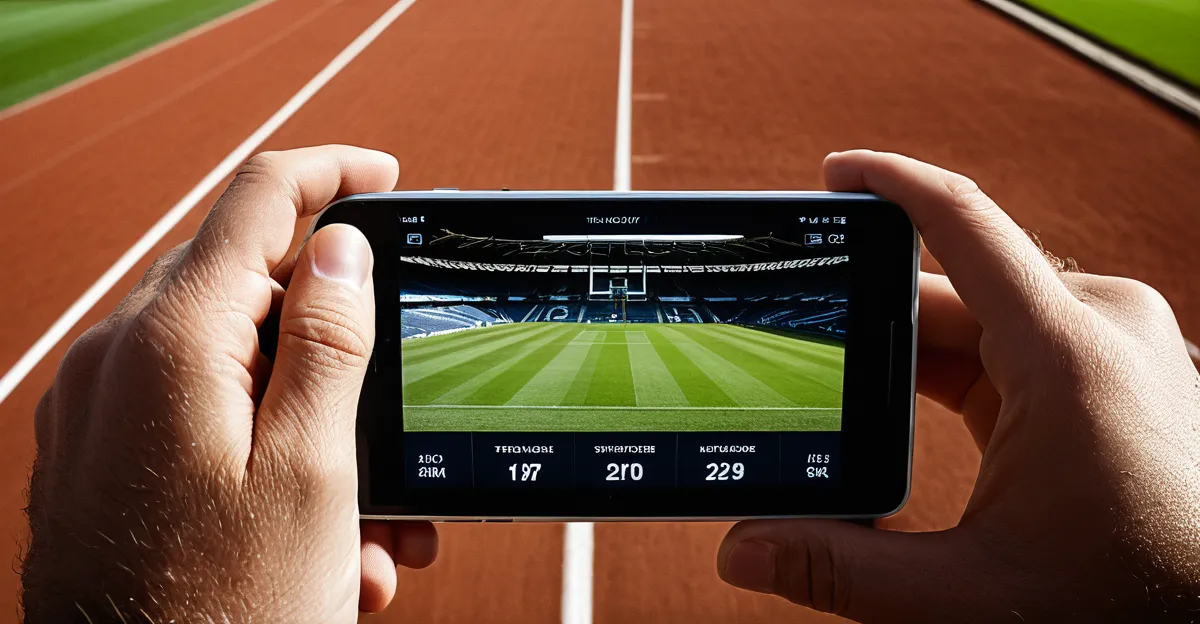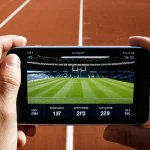Overview of Technological Advancements in UK Sports
The evolution of UK sports has been significantly shaped by technological advancements, transforming the landscape of various sports disciplines. Historically, technology’s integration has led to a paradigm shift, influencing training, performance, and fan engagement. Early breakthroughs set the foundation for future innovations. For instance, the introduction of advanced sports training technology has enabled athletes to monitor performance metrics, providing a detailed understanding of physical capabilities.
Technological milestones in UK sports have ranged from the adoption of wearable devices to sophisticated performance monitoring systems. These tools have become indispensable in sports performance enhancement, offering real-time data that aids in tailoring training regimens. This evolution is a testament to the seamless integration of technology across various sports in the UK.
In the same genre : How Does the Rise of Women’s Football Impact UK Sports Overall?
Historically, each sport has embraced technology differently. In the realm of athletics, video analysis has been utilized to refine techniques, capturing minute movements to improve athletic performance. Meanwhile, virtual reality training programs have redefined how athletes prepare, providing immersive environments that mimic real-world scenarios, enhancing readiness and responsiveness. These advancements underscore the pivotal role of technology in shaping the modern sporting landscape.
Broadcasting Innovations
Sports Broadcasting Technology has evolved remarkably in the UK, redefining how fans consume live sports. From the early days of radio to today’s digital platforms, these innovations have enhanced viewer connections with their favourite sports.
Also to discover : How Has the Role of Technology Changed in UK Sports Over the Years?
Early Beginnings of Sports Broadcasting
The journey began with radio, a pivotal moment in sports broadcasting technology. Broadcasting live matches allowed fans to experience the excitement in real time. It laid the groundwork for future advancements, bringing sports into homes nationwide and connecting fans to their teams.
The Rise of Television and its Impact
Television’s emergence transformed live sports streaming, making events accessible to a broader audience. Satellite and cable broadcasting introduced high-definition views, revolutionising how fans experienced games. This shift brought sports fandom to new heights, fostering deeper connections and wider reach.
The Role of Digital Streaming Platforms
Today, digital streaming platforms are at the forefront of live sports consumption. The ability to stream matches anywhere, including mobile devices, has redefined fan engagement. These platforms offer interactive features, like live commentary and multi-angle views, enhancing the immersive experience. This evolution illustrates the critical role of technology in reshaping the sports broadcasting landscape, ensuring fans remain at the heart of the action.
Training and Performance Enhancements
In the realm of sports training technology, significant strides have been made, ushering in a new era of athlete preparation and performance. These advancements have not only enhanced athletic capabilities but have fundamentally altered how sports are trained and performed.
Wearable Technology in Sports
Wearable devices have become essential tools in the athlete’s training arsenal. From fitness trackers to smartwatches, these gadgets monitor a range of metrics such as heart rate, calories burned, and sleep patterns. By providing real-time data, they enable athletes to optimize training regimens and maintain peak physical condition. This personal health insight allows for more tailored approaches to training, ensuring that athletes can push their boundaries while minimizing the risk of injury.
Video Analysis Tools
The implementation of video analysis has revolutionised sports training, allowing coaches and athletes to dissect and refine techniques meticulously. By capturing minute movements during practice or competition, these tools enable a detailed breakdown of actions, helping athletes understand their strengths and areas for improvement. This level of analysis facilitates informed adjustments, boosting skill development and performance outcomes.
Virtual Reality Training Programs
Virtual reality (VR) has emerged as a cutting-edge method for skill development, offering immersive training environments that replicate real-world scenarios. This technology allows athletes to navigate complex situations in a controlled setting, enhancing their readiness and responsiveness. VR’s ability to simulate varied conditions and opponents provides an unparalleled opportunity for athletes to hone their mental and physical skills without the wear and tear of traditional training methods. Such innovative approaches underscore the transformative impact of technology in sports, propelling athletes toward unprecedented levels of excellence.
Fan Engagement and Experience
In the realm of sports fan engagement technology, major advancements have reshaped how enthusiasts interact with their favourite teams and events. The integration of interactive experience technologies has significantly enhanced fan interactions, both remotely and in stadiums.
Social Media Platforms
Social media platforms have revolutionised the way fans engage with sports. They offer a dynamic space for fans to connect, share opinions, and interact with their favourite athletes. Platforms like Twitter and Instagram provide real-time updates and behind-the-scenes content, fostering a sense of community and immediacy. This constant flow of information enhances fan loyalty and keeps them invested.
Mobile Apps and Game-day Technologies
The development of tailored mobile apps has further enriched the fan experience, offering personalized content and conveniences. Game-day technologies integrated within apps allow fans to access stats, live scores, and even order concessions from their seats. These features create a seamless and engaging event experience, maximizing enjoyment and efficiency for spectators both in stadiums and at home.
Virtual and Augmented Reality Experiences
The integration of virtual and augmented reality (VR and AR) has brought a new dimension to fan engagement. These technologies enable fans to experience games from immersive perspectives, such as 360-degree replays or virtual stadium tours. AR can overlay additional information, enhancing live events with real-time stats or player insights. Such innovative applications deepen fan engagement, making the viewing experience much more interactive and enjoyable.
Case Studies from Various Sports
In the landscape of UK sports, technology in sports has particularly transformed various disciplines, with goal-line technology in football (soccer) being a pivotal advancement. This system accurately detects whether the ball has crossed the goal line, reducing refereeing errors. Its implementation has reassured both players and fans of fair play, significantly impacting sports performance and training by allowing teams to strategize more effectively.
In cricket, the Decision Review System (DRS) exemplifies a crucial technological innovation. This system combines several technologies, such as Hawk-Eye, to assess on-field umpire decisions. DRS innovations offer teams a chance to challenge decisions, thus influencing match outcomes and enhancing the accuracy of umpiring, which in turn shapes team strategies and performance.
Athletics has seen a surge in performance tracking technologies. Utilizing wearables and advanced performance monitoring, athletes gain insights into their biomechanics and exertion levels. Such technologies facilitate minute adjustments in their training regimens, optimizing performance while minimizing injury risks. These sports training technologies refine athletes’ techniques and help maintain peak physical conditions, illustrating the integral role of technology in propelling modern sports to new heights.
Future Trends in Sports Technology
The future of sports technology is set to witness unprecedented advancements that promise to redefine athletic experiences and fan engagement. A key area poised for transformation is the integration of artificial intelligence and machine learning in sports analytics. These technologies enable precise data analysis to uncover patterns and predictions, thereby enhancing team strategies and individual performance analysis.
Injury prevention and health monitoring are also on the cusp of innovation. Smart wearables equipped with biosensors will provide continuous health tracking, offering insights into fatigue levels and potential injury risks before they become critical. This proactive approach is set to revolutionize athlete care, ensuring longevity and peak performance.
Another vital trend is the wave of sustainable and eco-friendly technologies making headway in sports infrastructure. From solar-powered stadiums to eco-friendly gear, the drive towards sustainability is reshaping how sports organizations conduct their operations responsibly.
The evolving landscape of sports technology emphasizes agility in adaptation. As these innovations unfold, they promise to not only enhance performance but also to reshape the entire industry towards a more inclusive, efficient, and responsible future.











